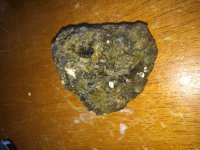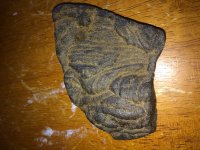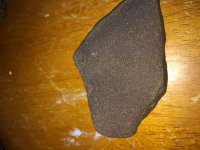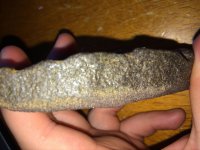Hi everyone, brand new member to the site, and recently got into rock collecting. I've been having a difficult time identifying a few rocks i've found, wondering if anyone could help me out.

Found this one on a beach in NY. seems to have little bits of muscovite on it also.

This one seems to be some sort of metal rock. It is not very heavy, seems to be non-magnetic, and has redish/orangish rust on it.

Here is the backside of the rock.

image taken from the side.
I would really appreciate any help identifying these.
Thanks!

Found this one on a beach in NY. seems to have little bits of muscovite on it also.

This one seems to be some sort of metal rock. It is not very heavy, seems to be non-magnetic, and has redish/orangish rust on it.

Here is the backside of the rock.

image taken from the side.
I would really appreciate any help identifying these.
Thanks!
Last edited:


 But you found it on the beach so take a look around the inland and see if you can trace it is my suggestion. Has not been in the water long.
But you found it on the beach so take a look around the inland and see if you can trace it is my suggestion. Has not been in the water long. Difficult to say when the stone is not in the hand.
Difficult to say when the stone is not in the hand.

